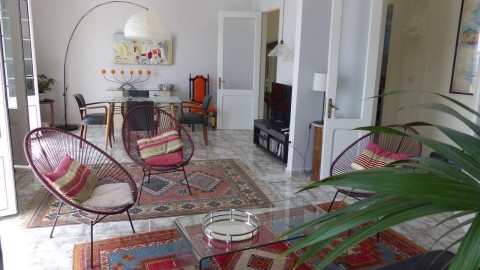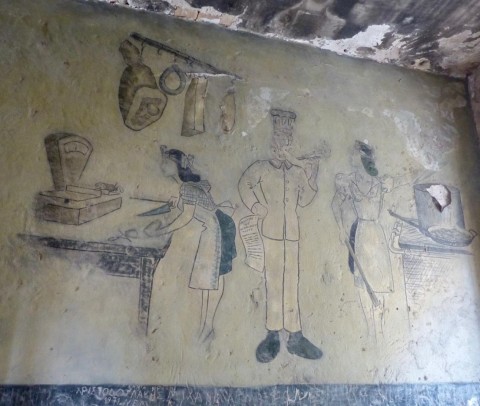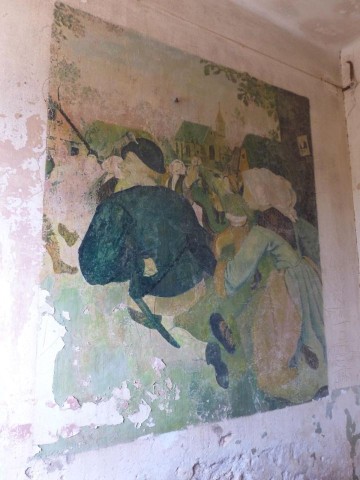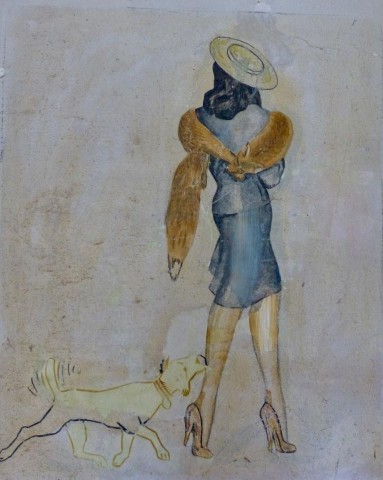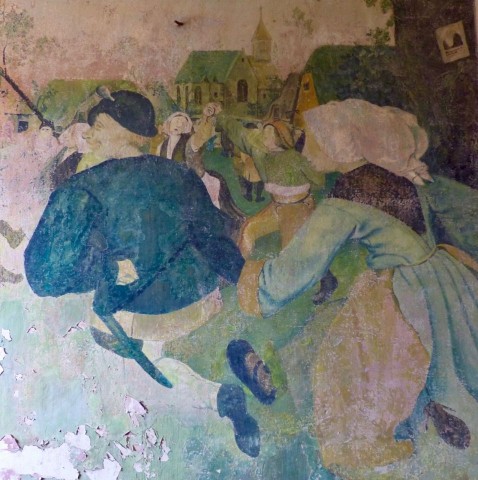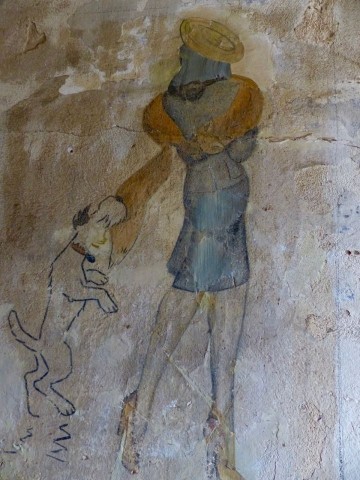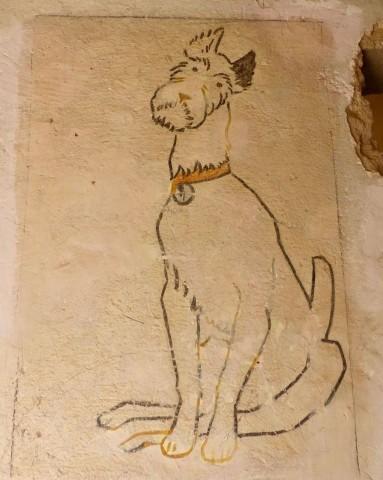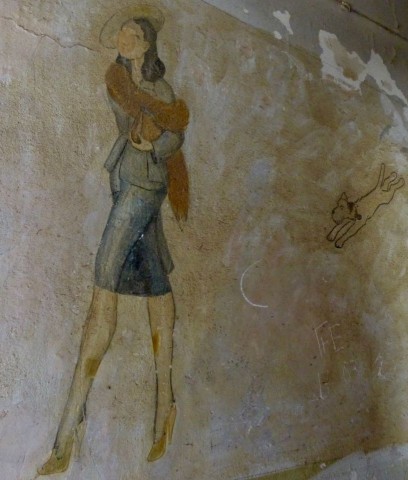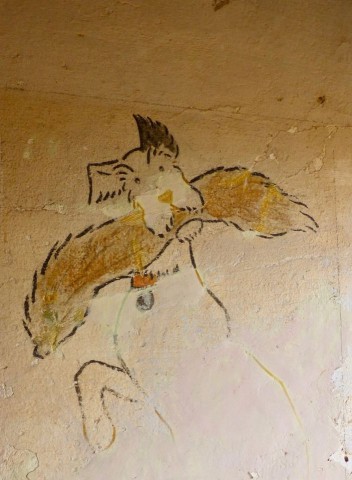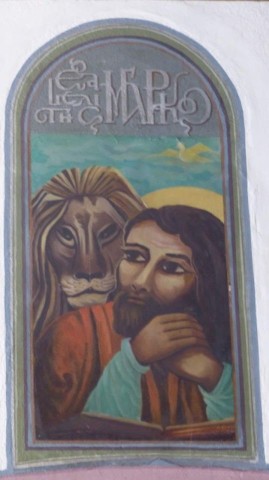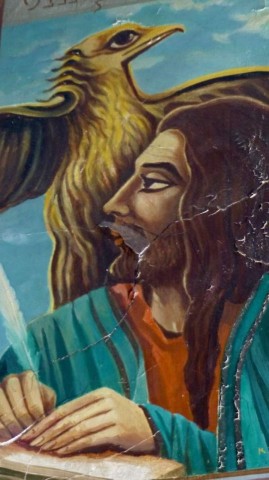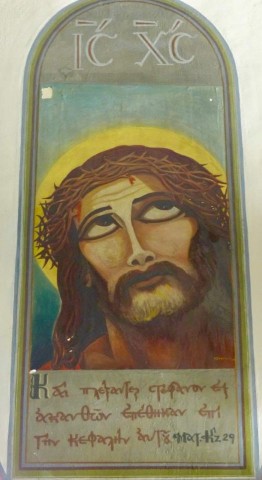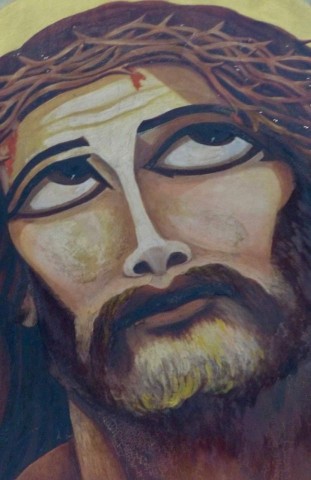Secrets of Leros
Particularly in the Dodecanese, it is hard for a traveller to miss seeing the shadows of the Second World War. I have written about this before but it continues to fascinate me as more information unfolds. Italy owned the Dodecanese (meaning twelve) islands from 1918 to 1945. The Italian architecture and town planning in Lakki on Leros island is in stark contrast to almost any other Greek town. Despite the underlying fascism, my admiration for the Italian architects is undiminished. The Italians planned according to the dictates of the motor car and the Greeks according to human needs and scale.
Our friends Jeff and Fabienne Peria have bought a flat in one of the long, curved Italian apartment buildings facing the harbour. A beautiful flat in which we stayed for a few days while the boat was being commissioned.
Jeff took us in his 4x4 into the hills, travelling on roads made by the Italian army of occupation in the '40's, roads that are today more or less as they were 80 years ago. Hairpin bends so tight that they required a 3-point turn to get round with the wheels a foot or two from the edge of the abyss. Up to a shepherd's hut hundreds of meters above the sea in a lunar landscape of rocks, dust and goat shit.
Not far from the hut, at the top of the road, there is a military barracks built by the Italians during the Second WW. It was probably occupied by Germans after the Italians quit the war and now used as a house for a herd of goats.
Inside there are a lot of goats and the sound of their bells lends a strangely cheerful note!
But what I found incredibly moving, and the reason Jeff had brought us here was the paintings and drawings that were done by the occupying German troops, possibly after the Italian surrender.
The funny as well as skilful drawings in this military goat shed illustrate the humanity of at least some of the bored soldiers exercising their creative skills. It seemed to us that Tintin's dog Snowy is the dog that is chasing the elegant woman and eventually grabs the tail of her fox fur stole! These are life size frescoes, covering whole walls. It is remarkable that no one seems to care about them; they will soon disappear into the mists of time.
More formally recognised were the paintings by political prisoners of the Greek military junta of the late '60's and early '70's on the walls of the St Matrona-Kioura chapel an otherwise unremarkable building on the coast and another one of Jeff's favourite spots. Leftists and communists were interred during a period of right-wing treachery, something all too familiar in recent South African history.
These murals moved me a great deal more than many of the great Byzantine styled murals we have seen in so many churches. They are painted with such expressiveness, sensitivity and sympathy.
Both these periods in the history of Greece exhibited the opposite of the 'philoxenia - friend to stranger' we have talked about in our previous blog. However, paradoxically, I can imagine that there were elements of philoxenia exhibited through people's humanity even in times that were tragic and where human being showed their worst characteristics. Somehow, despite all of its history, including 400 years of Ottoman oppression, Greece and particularly in the islands of Greece, the people have inherited and maintained a culture that is more connected to the best in human traits than many many others. Philoxenia survives as more than a concept.


